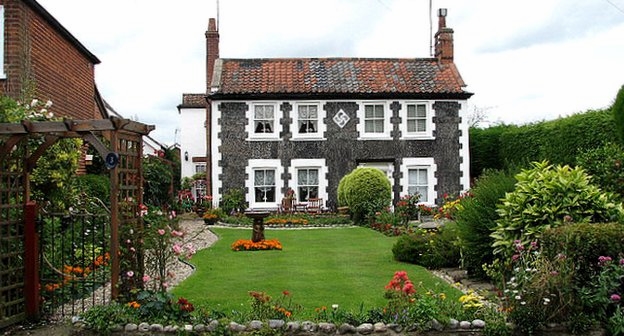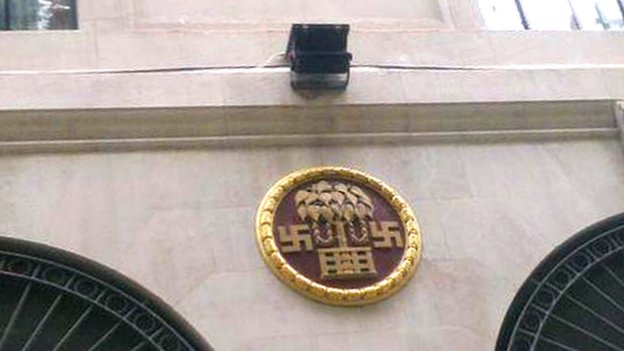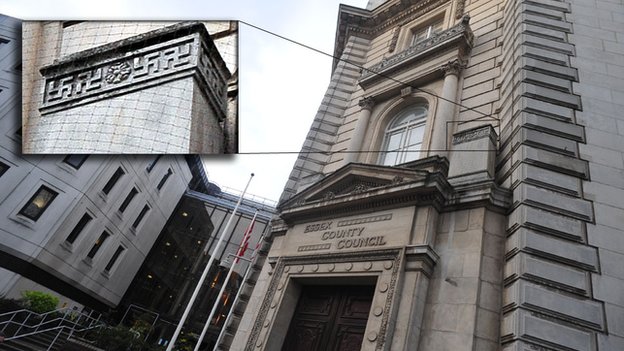The swastika as a shape has been popular for at least a couple of thousand years before Hitler went on his mental rampage, and not just in India. Similar symbols have been found in temples and art from various civilizations including Turkic, India, Iran, Armenia, Nepal, China, Japan, Korea, North America, Mongolia and Europe. And many religions still use it on a regular basis: Buddhism, Hinduism, and Jainism, primarily as a tantric symbol that invokes Lakshmi – the Vedic goddess of wealth, prosperity and auspiciousness apparently.
A swastika isn’t necessarily what you’d expect on a pebble flint cottage in Norfolk:

Hindus often draw the symbol on doors, walls and floors. As far as they’re concerned it still keeps its old Sanskrit meaning of “it is good”. The earliest archaeological evidence of swastika-shaped ornaments dates back to the Indus Valley Civilization (3300—1300 BC) and paleolithic Europe. So maybe this simple shape just holds some kind instinctive appeal. Maybe it was something to do with astronomy, maybe it wasn’t. It seems odd that it appeared across so many sections of the world, but then I guess we only notice it so much now because of the Nazi emotions attached to it.
India House in central London:

Essex County Council head office:

☛ Next Up: Indian Clothes Shop Called “Hitler”















